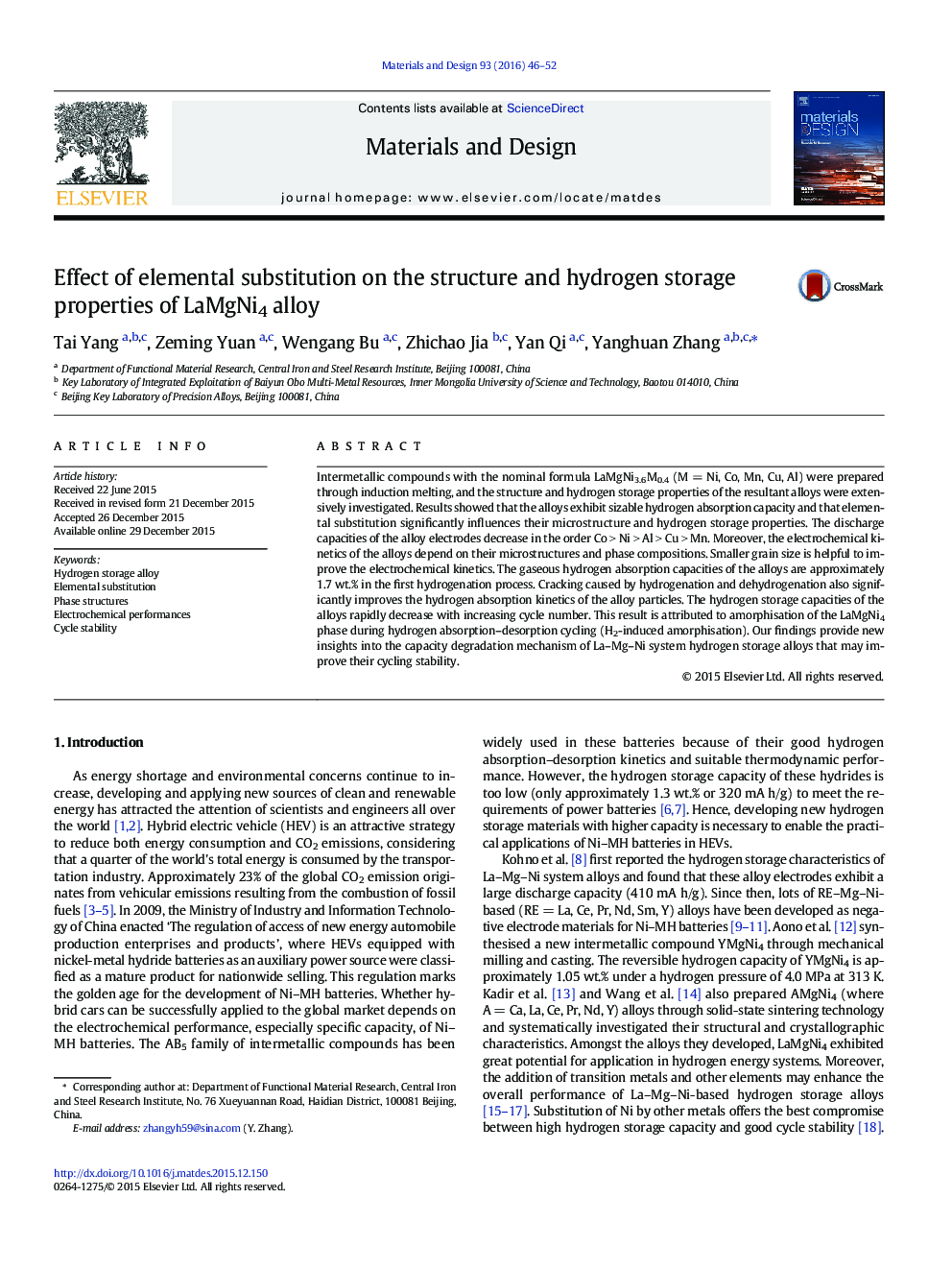| Article ID | Journal | Published Year | Pages | File Type |
|---|---|---|---|---|
| 828158 | Materials & Design | 2016 | 7 Pages |
•Co-, Mn-, Cu- and Al-doped LaMgNi4 alloys fabricated through induction melting exhibit a multiphase structure.•Substitution of Ni with Co produces a maximum discharge capacity of 352.1 mA h/g.•Amorphisation of the LaMgNi4 phase caused by hydrogenation leads to capacity degradation.•Substitution of Ni with Mn, Cu and Al exacerbates H2-induced amorphisation of the LaMgNi4 phase.
Intermetallic compounds with the nominal formula LaMgNi3.6M0.4 (M = Ni, Co, Mn, Cu, Al) were prepared through induction melting, and the structure and hydrogen storage properties of the resultant alloys were extensively investigated. Results showed that the alloys exhibit sizable hydrogen absorption capacity and that elemental substitution significantly influences their microstructure and hydrogen storage properties. The discharge capacities of the alloy electrodes decrease in the order Co > Ni > Al > Cu > Mn. Moreover, the electrochemical kinetics of the alloys depend on their microstructures and phase compositions. Smaller grain size is helpful to improve the electrochemical kinetics. The gaseous hydrogen absorption capacities of the alloys are approximately 1.7 wt.% in the first hydrogenation process. Cracking caused by hydrogenation and dehydrogenation also significantly improves the hydrogen absorption kinetics of the alloy particles. The hydrogen storage capacities of the alloys rapidly decrease with increasing cycle number. This result is attributed to amorphisation of the LaMgNi4 phase during hydrogen absorption–desorption cycling (H2-induced amorphisation). Our findings provide new insights into the capacity degradation mechanism of La–Mg–Ni system hydrogen storage alloys that may improve their cycling stability.
Graphical abstractFigure optionsDownload full-size imageDownload as PowerPoint slide
